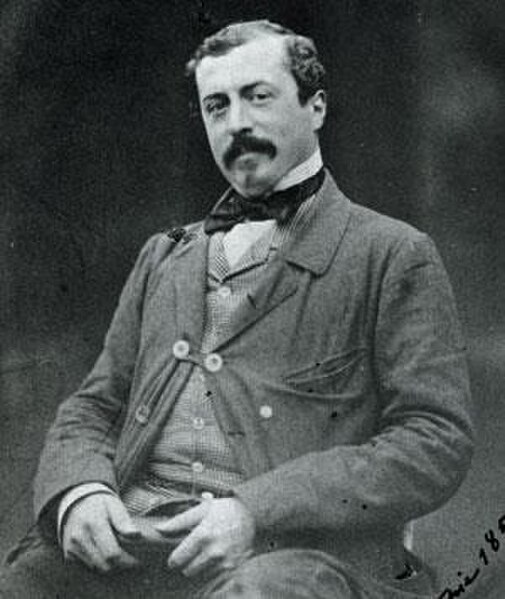British ambulances in the Franco-Prussian War
Though the United Kingdom remained neutral during the Franco-Prussian War of 1870–71, it provided ambulances and other medical assistance to both combatants and the civilians affected by the war. The term "ambulance" at this time denoted a medical organisation that provided field hospitals, transport and surgical operations, not the more limited modern use. The British public donated more than £300,000 to provide medical assistance during the war. The ambulances, together with those of other neutral organisations, proved very effective at treating casualties, and following the war all major powers took steps to implement similar arrangements for future wars.
Richard Wallace pictured in 1857
Charles E Ryan in the uniform of the Anglo-American Ambulance of 1870–71
Sir Richard Wallace, 1st Baronet
Sir Richard Wallace, 1st Baronet, of Sudbourne Hall in Suffolk, Hertford House in London, of Antrim Castle, County Antrim, Northern Ireland, of 2 Rue Laffitte, Paris, and of the Château de Bagatelle in Paris, was a British art collector and Francophile. Based on the Return of Owners of Land, 1873 he was the 24th richest man in the United Kingdom and the 73rd largest landowner, holding in total 72,307 acres, with a total annual value of £86,737. In addition he had valuable property in Paris and one of the greatest private art collections in the world, part of which, now known as the Wallace Collection, was donated to the UK Government by his widow, in accordance with his wishes.
Sir Richard Wallace
Wallace House, Lisburn, built by Wallace as his residence, and for his son, but little used
The Wallace Memorial, Castle Park, Lisburn, erected in 1892
Sudbourne Hall photographed circa 1900, as built in 1784 by Francis Seymour-Conway, 1st Marquess of Hertford, to the design of the architect James Wyatt. Demolished in 1953.





